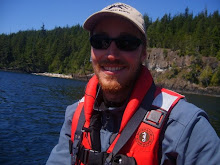 This past week saw the long-awaited release of a peer-reviewed paper by several members of our staff, Commercial fisheries closures in marine protected areas on Canada’s Pacific coast: The exception, not the rule. As the title suggests, this paper examines fisheries closures (or lack thereof) in 161 marine protected areas (MPAs) in Canada's Pacific waters. Alarmingly, 160 of these areas are open to some amount of commercial harvesting. This begs the question: what are these areas protected from?
This past week saw the long-awaited release of a peer-reviewed paper by several members of our staff, Commercial fisheries closures in marine protected areas on Canada’s Pacific coast: The exception, not the rule. As the title suggests, this paper examines fisheries closures (or lack thereof) in 161 marine protected areas (MPAs) in Canada's Pacific waters. Alarmingly, 160 of these areas are open to some amount of commercial harvesting. This begs the question: what are these areas protected from?
MPAs and fisheries closures in BC (Click to see larger map).
Of course, some of these areas are designated to protect specific species, habitats, physical features, or cultural sites from exploitation and development. As such, they do not require closures of all fisheries within their boundaries. However, 95 of the areas in BC fall under the International Union for the Conservation of Nature (ICUN) categories I and II, and are intended to be free from any form of exploitation. Of these 95, not a one is fully closed to commercial harvesting.
Canad currently protects about one percent of it's ocean and Great Lake waters, and has committed through the international Convention on Biological Diversity to build a network of MPAs by 2012 that protect 10 percent of every habitat type. But the disparity between the classification of existing areas and their actual use shows us that Canada still has a long way to go to reach these goals. With that in mind, the authors of the above-mentioned study set out a number of recommendations for improving the management of MPAs in the Canadian Pacific. These have been drafted into a letter, which can be sent electronically to the Minister of Fisheries.
For those of you who are (like me) fans of Google Earth, you can download a .KMZ file which will allow you to view all of the MPA's in BC.
On a related note, the Proceedings of the National Academy of Science recently published a special feature on marine reserves (which is freely accessible online). This feature is rife with papers that demonstrate the benefits of protected areas to fish stocks, biodiversity, and overall ecosystem health, particularly when these areas are incorporated into a network. They provide concrete examples of where MPAs and MPA networks have worked elsewhere in the world, and serve as a great reminder of why we should sit up and take note of the status of our own protected areas.

No comments:
Post a Comment